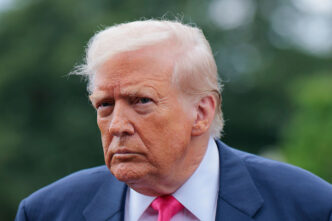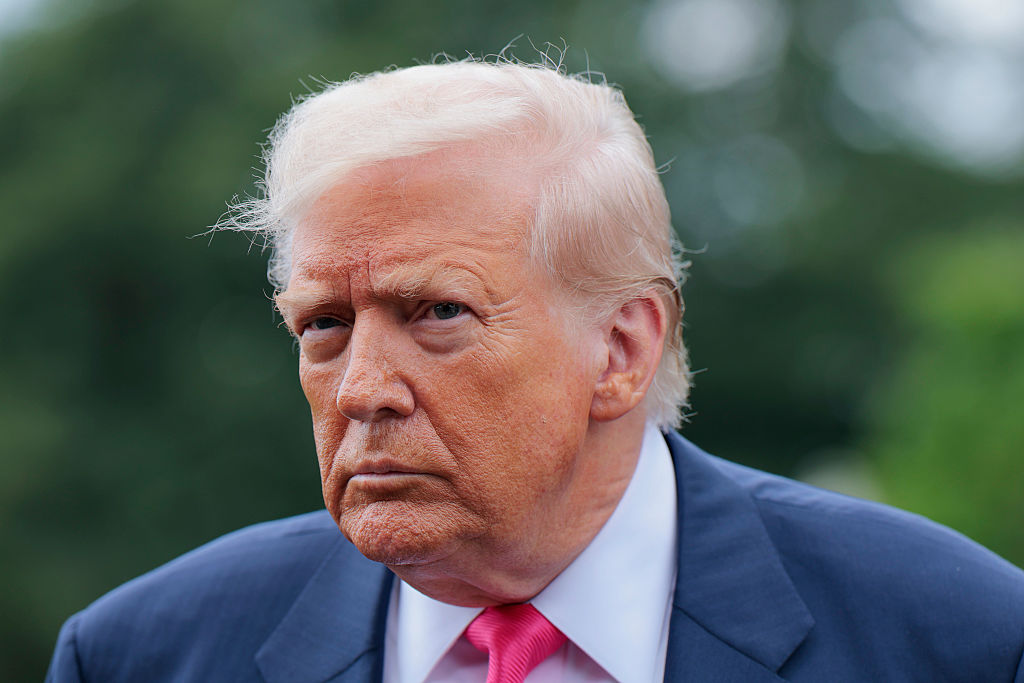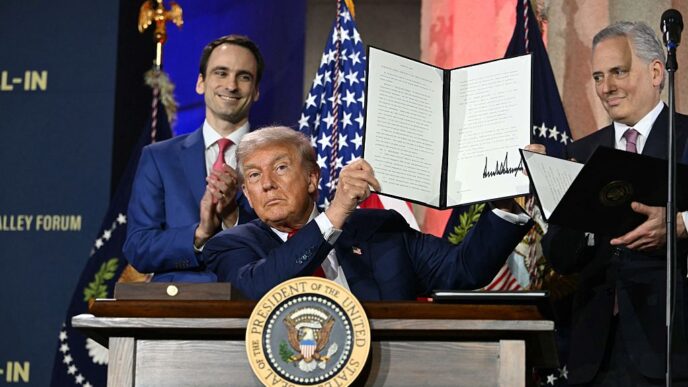The Trump administration rolled out its AI Action Plan on Wednesday, signaling a major pivot from Biden’s more cautious AI approach. The plan prioritizes rapid AI infrastructure expansion, deregulation, and a tough stance on national security and competition with China.
The administration is pushing hard to build more data centers, even suggesting the use of federal lands and maintaining power during peak grid demands. Environmental regulations like NEPA and the Clean Air Act are flagged as obstacles to AI growth. The plan calls for streamlined permitting and fast-track programs to speed up construction, including on protected lands and military bases.
Deregulation gets a major push. The plan threatens to cut state federal funding if their AI rules interfere with agencies like the FCC. It also directs federal agencies to pinpoint and remove regulations that slow down AI innovation.
Free speech and “American values” are front and center. The plan demands AI systems be free from “top-down ideological bias” and stresses government contracts should only go to models deemed “objective” — though how neutrality will be judged is still unclear.
“It is essential that these systems be built from the ground up with freedom of speech and expression in mind, and that U.S. government policy does not interfere with that objective,” the plan states.
“We must ensure that free speech flourishes in the era of AI and that AI procured by the Federal government objectively reflects truth rather than social engineering agendas.”
The plan includes launching federal programs to research AI safety topics like interpretability, control systems, and adversarial robustness. Agencies like DoD and DOE will hold hackathons to test AI security vulnerabilities.
Trump’s team, including Silicon Valley veterans like Michael Kratsios and David Sacks, crafted the plan after considering over 10,000 public comments.
China is targeted heavily. The plan tasks the Department of Commerce with assessing Chinese AI models for censorship and propaganda alignment. Intelligence agencies will watch foreign AI threats closely.
National security appears 23 times in the plan. DoD gets a spotlight for using AI to automate workflows, upskill troops, and secure priority compute access during emergencies. The plan aims to keep adversarial tech, including Chinese-made chips, out of U.S. supply chains.
This is all a big bet on “Build, Baby, Build!” and deregulation to win the AI arms race—and it could mean faster AI expansion but at the cost of environmental safeguards and regulatory oversight.
The full AI Action Plan PDF is out now.














